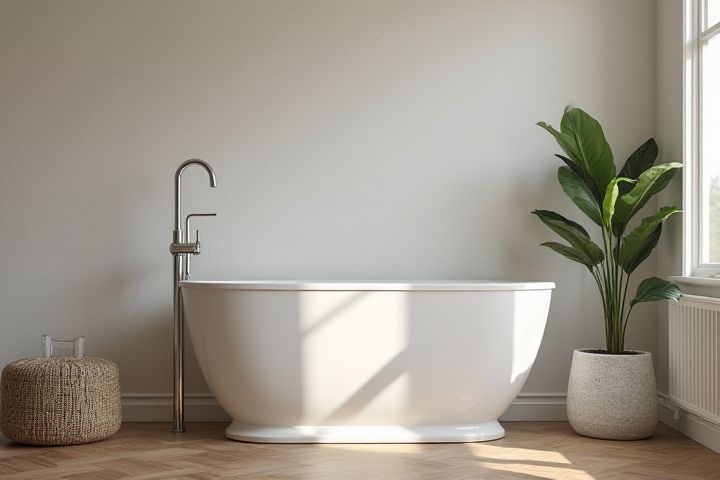
Soundproofing a house affordably involves several effective strategies. Installing acoustic panels on walls and ceilings can significantly reduce noise transmission without high costs. Weatherstripping doors and windows helps seal gaps, preventing outdoor noise from penetrating your living space. Insulating walls with soundproofing materials, such as fiberglass insulation or sound dampening foam, also enhances noise control and energy efficiency. Lastly, consider using thick rugs or carpets to absorb sounds, creating a quieter environment in your home.
Can We Soundproof A House Affordably
Use weatherstripping on doors and windows.
Weatherstripping is an effective and affordable method to soundproof your house by sealing gaps around doors and windows. This material, available in various forms such as foam, felt, or rubber, helps minimize noise transmission by blocking sound waves from entering or escaping your home. Properly applied weatherstripping not only enhances acoustical comfort but also improves energy efficiency by preventing drafts. To optimize your soundproofing efforts, ensure all edges are tightly sealed, providing a quieter living environment.
Install thick curtains or soundproof drapes.
Installing thick curtains or soundproof drapes can significantly reduce noise infiltration in your home at a cost-effective price. These window treatments can absorb sound waves, thereby preventing external noise from disrupting your space. Opt for fabrics like velvet or polyester, which are known for their dense material, enhancing their soundproofing properties. Depending on the size of your windows, you could spend between $30 to $300 on high-quality soundproof drapes, making it an affordable solution for enhancing your home's tranquility.
Add area rugs to absorb sound.
Adding area rugs is an effective and budget-friendly method to enhance soundproofing in your home. A rug can absorb sound waves, reducing echo and minimizing noise transfer between rooms, particularly in spaces with hard flooring. Opt for thicker, high-pile rugs, as they provide more significant sound absorption. For optimal results, consider placing multiple rugs in high-traffic and communal areas, helping to create a quieter and more serene living environment.
Use acoustic foam panels.
Acoustic foam panels, widely recognized for their sound-absorption properties, can effectively reduce noise levels in your home at a relatively low cost. Typically priced between $1 to $5 per square foot, these panels can be strategically installed in rooms prone to echoes and outside noise. By covering key areas such as walls and ceilings, you can achieve a noticeable improvement in sound quality without extensive renovations. For an average-sized room, investing in around 50 square feet of foam can significantly enhance your listening experience and provide a more tranquil living environment.
Consider mass loaded vinyl.
Mass Loaded Vinyl (MLV) is an effective and affordable soundproofing solution for homeowners seeking to reduce noise transmission. This dense material can be applied to walls, ceilings, and floors, providing a significant decrease in sound transfer due to its high mass and flexibility. You can easily install MLV by adhering it directly to existing surfaces or incorporating it into construction designs during renovations. By combining MLV with other soundproofing techniques, such as acoustic panels or sealing gaps, you can create a quieter home environment without a substantial financial burden.
Seal gaps with acoustic sealant.
Sealing gaps with acoustic sealant is a cost-effective method to enhance your home's soundproofing. This flexible, high-performance material can be easily applied around windows, doors, and wall joints to block sound transmission. Acoustic sealant adheres well to various surfaces, ensuring a tight seal that reduces unwanted noise infiltration. By focusing on these critical areas, you can significantly improve your home's acoustic comfort without a large financial investment.
Install door sweeps.
Installing door sweeps is an affordable and effective way to enhance the soundproofing of your home. These protective strips, usually made of rubber or brush material, seal the gap between the bottom of the door and the floor, significantly reducing noise transmission. You can easily find door sweeps at local hardware stores or online, enabling you to tackle this DIY project without professional assistance. By integrating door sweeps into your soundproofing strategy, you improve your home's acoustic environment while remaining budget-conscious.
Use soundproofing paint.
Using soundproofing paint is an affordable option to enhance your home's acoustics without major renovations. This specialized paint contains sound-dampening compounds that absorb sound waves, minimizing noise transfer between rooms. By applying soundproofing paint to your walls and ceilings, you can create a quieter environment that reduces distractions from outside noise. To maximize effectiveness, ensure surfaces are clean and prepare them properly for optimal adhesion and performance of the paint.
Rearrange furniture to block noise.
Rearranging furniture offers an affordable method to soundproof your home effectively. Positioning large furniture pieces, like bookshelves and sofas, against shared walls can block and absorb sound waves, reducing noise intrusion by as much as 30%. You can also utilize heavy curtains or rugs strategically in high-impact areas to further dampen noise. By considering the layout of your living spaces, you can create a quieter environment without the need for costly renovations.
Build bookshelves against walls.
Building bookshelves against walls is an effective and affordable method to soundproof your house, as they can absorb and diffuse sound waves. Using sturdy materials like plywood or solid wood can enhance their acoustic performance, while filling the shelves with books or dense objects further increases sound insulation. A well-constructed bookshelf can provide a sound barrier that reduces noise transmission significantly, which is especially beneficial in shared living spaces. By investing in this DIY project, you can achieve a quieter environment without incurring high costs typically associated with professional soundproofing solutions.
